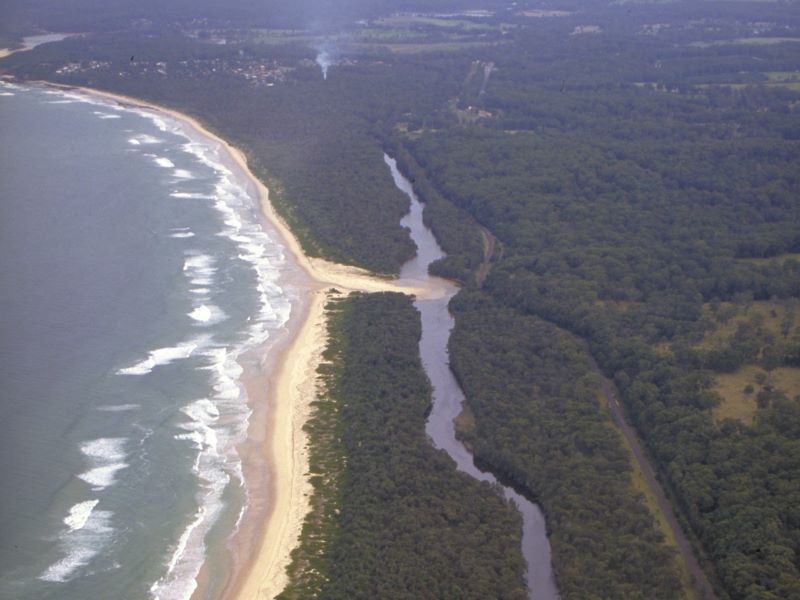Oyster Creek is a small lagoon with an intermittently closed/open entrance, which meets the sea north of Valla Beach on the New South Wales mid-north coast. The estuary has a unique linear shape, where two creeks parallel to the beach converge from opposite directions at the entrance.
Water quality report card
As part of our water quality monitoring program we assess the water quality and ecosystem health of an estuary using a range of relevant indicators. We sample a subset of the estuaries located between the Queensland border and Taree every 3 years. The most recent sampling in Oyster Creek was completed over the 2018–19 summer, when 2 sites were sampled on a monthly basis.
This report card represents 2 water quality indicators that we routinely measure: the amount of algae present and water clarity. Low levels of these 2 indicators equate with good water quality.
Algae
Water clarity
Overall grade
The report card shows the condition of the estuary was good with:
- algae abundance graded good (B)
- water clarity graded excellent (A)
- overall estuary health graded good (B).
Grades for algae, water clarity and overall are represented as:
- A – excellent
- B – good
- C – fair
- D – poor
- E – very poor.
Go to estuary report cards to find out what each grade means, read our sampling, data analysis and reporting protocols, and find out how we calculate these grades.
We have monitored water quality in Oyster Creek since 2009. This table shows the water quality grades for this estuary over that time.
| Year | Algae | Water clarity | Overall grade |
|---|---|---|---|
| 2009–10 | A | C | B |
| 2018–19 | B | A | B |
Physical characteristics
| Estuary type | Lagoon |
|---|---|
| Latitude (ºS) | –30.56 |
| Longitude (ºE) | 153.02 |
| Catchment area (km2) | 16.8 |
| Estuary area (km2) | 0.1 |
| Estuary volume (ML) | 56.7 |
| Average depth (m) | 0.4 |
Notes: km2 = square kilometres; m = metres; ML = megalitres.
Water depth and survey data
Bathymetric and coastal topography data for this estuary is available in our data portal.
Land use
Oyster Creek catchment is moderately disturbed. The upper catchment west of the Pacific Highway mostly remains forested and is managed by Forestry NSW. About 25% of the catchment has been cleared for grazing and horticulture, and around 6% for urban use.
National and marine parks
- Jagun Nature Reserve is the largest conservation area within the Oyster Creek catchment.
- An important spiritual link exists for local Gumbaynggirr people between the Oyster Creek entrance and Nunguu Mirral Aboriginal Area.
- This estuary does not flow into a marine park.
Community involvement
- Bellinger Landcare is an umbrella organisation for landcare in the Bellingen–Dorrigo region. It provides workshops and volunteer work opportunities in regeneration and environmental projects. It also works to raises awareness in the community about environmental issues and sustainable agriculture.

Aerial view of Oyster Creek estuary.
Local government management
Local councils manage estuaries within their area unless the estuary is attached to a marine park. Oyster Creek is managed by Bellingen Shire Council.
Threatened species
Oyster creek catchment provides an important habitat corridor for many threatened species, including the glossy-black cockatoo and yellow-bellied glider.
Read more about the biodiversity in our estuaries.